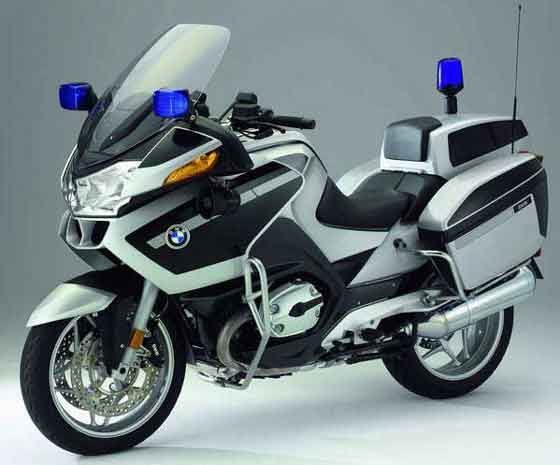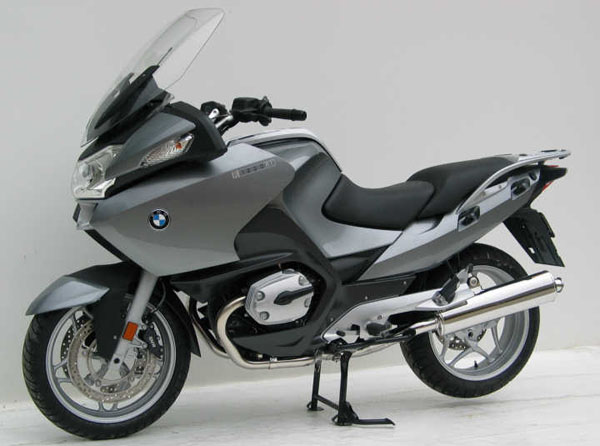BMW R 1200 RT Review ;
The BMW R 1200 RT has always been acknowledged as the epitome of comfortable and dynamic motorcycle touring in classic style. And now, the latest version of this unique active tourer, with its significant innovations, offers even more superior enduro qualities and dynamic benefits thanks to its new boxer engine.
In its configuration and basic structure, the new flat-twin engine is the same as the Double Overhead Camshaft (DOHC) engine featured in the BMW HP2 Sport. It has, however, been further upgraded and optimized for the BMW R 1200 RT to meet the specific requirements of an outstanding tourer.
With the 1170-cc boxer engine on the former model “already offering superior drive power under all conditions and in all situations”, according to BMW, the new R 1200 RT has even more to offer.
BMW says the new engine offers an increase in maximum torque from 85 – 88 lb-ft at an unchanged 6,000 rpm, for even greater acceleration and passing power. Also, the range of useful engine speed has been increased by 500 rpm to a maximum 8,500 rpm.
The third improvement is a significant increase in torque where it really counts at low and medium engine speeds, with a “smooth and homogeneous torque curve”, according to BMW. Maximum engine horsepower is the same as the prior model at 110 hp but occurs now at 7,750 rpm (previously 7,500 rpm).
New Boxer Engine for Touring
The BMW R 1200 RT has always been acknowledged as the epitome of comfortable and dynamic motorcycle touring in classic style. And now the latest version of this very special active tourer with its significant innovations offers even more sualities and dynamic benefits thanks to its new engine.
The BMW R 1200 RT has always been acknowledged as the epitome of comfortable and dynamic motorcycle touring in classic style. And now the latest version of this very special active tourer with its significant innovations offers even more sualities and dynamic benefits thanks to its new engine.
Designed and built for even higher engine speeds, the R 1200 RT’s new boxer engine , like the engine featured on the BMW HP2 Sport, is equipped with two overhead chain-driven camshafts (DOHC) per cylinder.
Valves are operated by very light rocker arms able to cope easily with high engine speeds. Radial arrangement of the four valves allows for a very compact combustion chamber configuration, and like that of the former models, the fuel/air mixture is ignited by two spark plugs (HP2 Sport: one spark plug). The compression ratio of 12.0:1 remains unchanged.
Knock control allows the engine to run on 95-98 RON premium (plus) fuel. Under certain conditions the rider may experience a very small drop in torque and a slight increase in fuel consumption whenever knock control cuts in.
Horizontal arrangement of the camshafts in the direction of travel calls for two special technical features on the new flat-twin engine: Each camshaft controls one intake and one exhaust valve, and the cams are finished in conical shape due to the radial arrangement of the valves.
In the interest of power and performance at low and medium engine speeds, and to provide even better free-revving riding characteristics, the intake and exhaust valve timing on both camshafts has been further improved.
Compared with the former models, the valve bases are up in diameter from 1.41 – 1.54 inches on the intake side and 1.22 – 1.30 inches on the exhaust side. Valve clearance is adjusted by light semi-hemispherical shims. To provide a greater free-valve cross-section, valve lift is up from 0.415 inches on the intake and 0.365 inches on the exhaust side to 0.425 inches on both sides.
Significantly More Torque Throughout the Entire Speed Range
The existing ratio of bore to stroke remains the same at 3.98:2.87 inches, giving the engine the same 1,170 cc capacity as before.
The existing ratio of bore to stroke remains the same at 3.98:2.87 inches, giving the engine the same 1,170 cc capacity as before.
Other features borrowed from the former engine are the crankshaft and the connecting rods, as well as their bearings, while the two pistons made of cast aluminum have been re-designed to match the modified dimensions of the combustion chamber.
Interacting with the upgraded intake system, throttle butterfly manifolds now offer 1.97 inches instead of the former 1.85 inches (HP2 Sport: 2.05 inches) opening clearance, newly designed intake air manifolds and an air filter element with increased volume capacity, the engine as in the past develops maximum output of 110 hp, now at 7,750 rpm. The biggest improvement, however, is the increase in maximum torque to 88 lb-ft at 6,000 rpm.
An oil cooler ensures a stable temperature even under extreme riding conditions. A further enhancement on the 2010 model is the use of cylinder head covers with two, instead of formerly four, fastening bolts in a new dynamic design. A valve cover guard made either of aluminum or plastic as well as chrome-plated aluminum cylinder covers are available as accessory items.



















0 comments:
Post a Comment